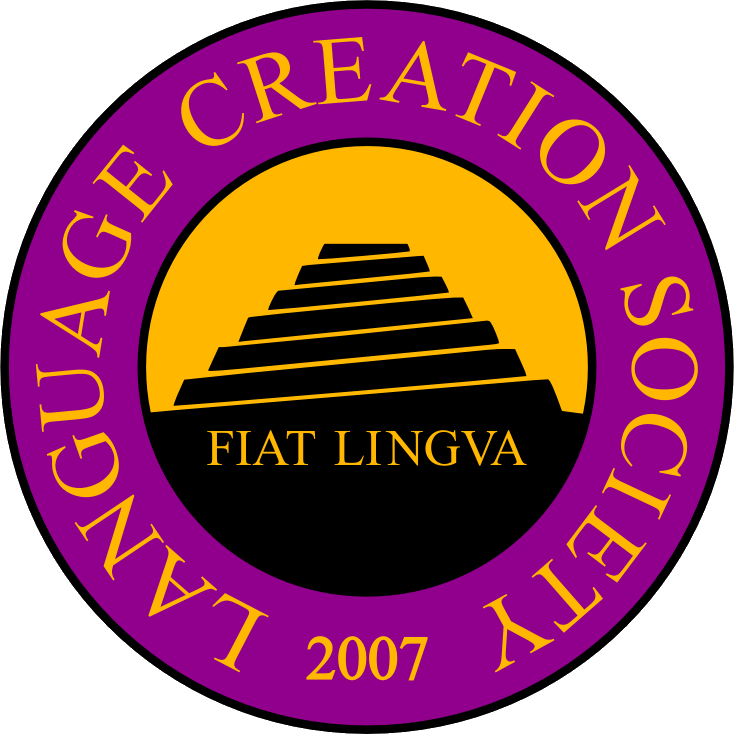LCC7 Speakers
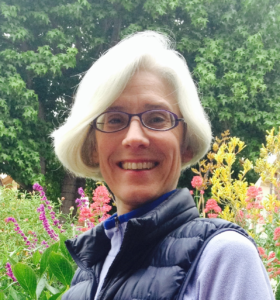 Lisa Maroski |
From Fantasy to Reality: Conlanging as Psychosocial ActivismConstructing languages informs world-making and vice versa. It provides a platform to question one’s assumptions, not just about language but about everything. Together, we will conduct an inquiry into our own assumptions that are so taken for granted that they “fly below the radar.” This process (hopefully) will leave participants with a lot of niggling questions to crop up at (in)opportune times in the creative process as you construct new languages and new worlds. |
| Lisa Maroski has been playing with words for most of her adult life—as an editor, author, playwright, and half-assed blogger. She developed new types of concepts/words in her novel, The One That Is Both, and continues to write about language at www.lisamaroski.com. Lisa studied philosophy and psychology at Bryn Mawr and Haverford Colleges and the University of Chicago and is on a mission to “take language broadband” so that language and consciousness synergistically support and advance one another. She also enjoys a form of heart-to-heart communication, the Argentine tango.
|
|
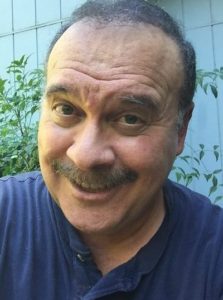 John Quijada |
Lexical Boundaries in Your Conlang: What We Can Learn From Real-World LanguagesThis talk will compare and contrast the differences in the lexico-semantic ranges of certain everyday words in French and English from the perspective of cognitive linguistics, as a means of analyzing the reasons for such differences, and how a conlanger might apply such an approach when creating one’s lexicon. |
| The somewhat tolerable John Quijada is a general weirdo whose dabblings in conlanging ended up flinging him into various (mis-)adventures in far-flung reaches of the globe and onto the pages of New Yorker magazine. Now retired and having transformed most of his weirdness into simple sloth, he dawdles aimlessly through life making electronic music, feeding his cat, traveling, cooking, reading, wine tasting, appreciating fine art, star-gazing, thinking up ideas for novels he’s too lazy to write, and pondering the quantum interpretation problem. Oh, and he has a degree in linguistics, too. | |
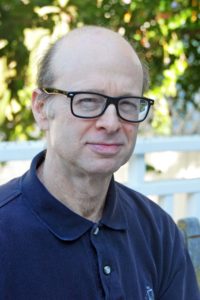 Jeffrey Brown |
Auxiliary Languages in the Bahá’í FaithDid you know that there is a religion whose scriptures explicitly speak of an international auxiliary language? Although many early auxlangs created in the 16th and 17th centuries had religious motivations, these were individual efforts. The Bahá’í Faith is unique in that its promise of the creation of a global auxlang is scriptural. This presentation will describe what the Bahá’í Writings say about an auxiliary language, what the implications of these statements are, the way in which questions about these passages have been answered by various personages and institutions of the Bahá’í Faith, and how the Bahá’í community has reacted to these statements. The presentation will be purely factual and historical, and will avoid any discussion of religion or matters of belief. |
| Jeffrey Brown created his first language at the age of 21, and was surprised, upon the birth of the Internet, that there were others who did this. He has lived most of his life in Minnesota, but now calls San Diego home. Jeffrey speaks English, Spanish, French, German, Arabic, and Hawaiian, with various degrees of incompetency. He has been long retired from a peripatetic career of accounting, engineering, adjunct faculty, technical training, business management, and consulting. He still is creating languages, though.
|
|
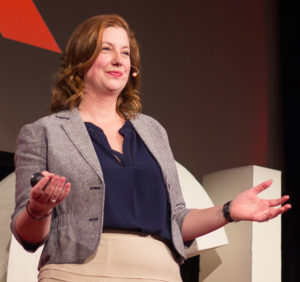 Christine Schreyer |
“Because if we don’t get this right, someone from that planet might be in the audience”The title of this presentation comes from an interview with Bill Hader, who played the character of Alpha 5 in Power Rangers, regarding how he and the other actors learned the Eltarian language created for that movie. While Hader provides this line in a joking manner, and while there may not be other Eltarian speakers in the audience (yet!), authenticity in world building is something that movie studios are continuing to focus on as fan audiences continue to demand these details, particularly in franchises with long histories (such as Superman and Power Rangers). In this presentation, I describe some of my experiences creating languages for Hollywood to provide a glimpse into the world of fast-paced, quickly-changing conlanging. I will discuss process, from being hired to providing initial materials, as well as my experiences working with actors, and, finally how I was required to adjust the languages as edits were made to the movies. |
| Christine Schreyer is an associate professor of anthropology at the University of British Columbia, Okanagan campus, where she teaches a range of courses in linguistic anthropology. Her research focuses on language revitalization and documentation, in Canada and in Papua New Guinea, as well as the relationship between endangered language communities and created language communities. She has conducted research with the Na’vi speech community (from the movie Avatar) and she is the creator of the Kryptonian language from Man of Steel (2013) and the Eltarian language from Power Rangers (2017). Recently, she was co-producer of the documentary film Kala Language Project: Kala Walo Nuã about her community-based work with Kala speakers. She is also an executive producer for the documentary film Conlanging: The Art of Crafting Tongues (July 2017).
|
|
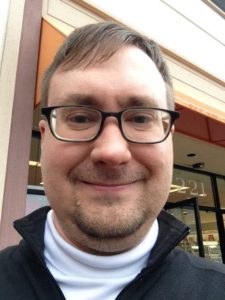 Doug Ball |
Alternations & Your ConlangsThis talk discusses (morpho-)phonological alternations and its related field, morphophonotactics. We will discuss the theoretical ideas on how to distinguish between phonologically and morphologically-conditioned alternations and what sorts of behavior one family of frameworks (Stratal OT/Co-phonologies) predict for alternations, all with an eye for application to conlanging. Examples will come from both natlangs and (my own) conlangs. |
| Doug Ball has been conlanging since 1994, working predominantly on the language Skerre. He is currently part of the linguistics faculty at Truman State University in Kirksville, Missouri (since 2009), where he teaches classes on theoretical linguistics, Native American and Polynesian languages, and, unsurprisingly, constructed languages and language construction.
|
|
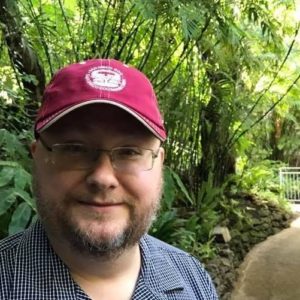
William Annis |
Using Construction Grammar as a Conlanging ToolConstruction Grammar (CxG) is an umbrella term for a collection of theories of language in cognitive linguistics. In this talk I will introduce a few key ideas from CxG which can clarify our thinking about how we create meaning from linguistic elements, in both natural and constructed languages.
|
| William Annis is a unix sysadmin living in Madison, Wisconsin. He has been conlanging for more than 30 years, and has been known to reduce local property values by occasionally playing the banjo.
|
|
 Justin Biggi |
Thus God Wills Ever: Constructing Stephen King’s High SpeechThis talk will focus on the work I’ve been doing in reconstructing Stephen King’s High Speech from his series The Dark Tower, based on what there already is in the novels. I will explain the methods I used to derive High Speech’s grammatical structure and phonetical rules using Stephen King’s worldbuilding as a starting point, and how my reconstruction of the language, in combination with King’s own work, led me to develop my ideas regarding the relationship between Mid-World culture and High Speech itself. |
| From Milan, Italy, Justin Biggi is a 21 year old Ancient Greek major at Oberlin College, in Ohio. In addition to Greek, he is also pursuing a minor in Anthropology and a concentration in Linguistics. Academically, he is very interested in the relationship that exists between the use of language in Plato’s political work (especially the Republic) and the language used in 5th century Athenian epigraphy, and the influence that the reign of the Thirty Tyrants had on the language used in Athenian legal speeches. His first foray into conlanging was when he attempted to reconstruct Kwenjâ, the precursor of Tolkien’s major Elven dialects, applying methods of historical linguistics and combining them with Tolkien’s own writing on the matter, focusing mostly on Avari culture, religious language and the possibility (and implications) of religion and religious thought in Middle Earth.
|
|
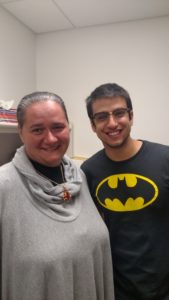 Kristen Tregar & Allyn Anthony Moriyon |
The Performative Embodiment of Conlangs: Constructing CharactersHow does spoken language inform an actor’s intentions? And furthermore, how can constructed languages specifically work to contribute to the development of an actor’s character? These questions begin to address how conlangs can and do function in performance. Using a case study from a 2017 theatre adaptation and it’s conlang Vrodash, this presentation will offer an actor’s perspective as well as that of the language creator. We will discuss how Vrodash developed as a collaboration between writer and actors, through consideration of embodied character-building. |
| Kristen Tregar is a PhD student at UC San Diego. She holds a BA in Biology from Bryn Mawr College, an MS in Forensic Science from CUNY- John Jay College of Criminal Justice, and an MA in Educational Theatre from NYU- Steinhardt. Her research interests include Irish theatre, animal studies, and the performance of police and military action. In 2013, she founded The Ireland Project, an intercontinental devised theatre project with high school students in New York and Tallaght, Ireland. NY directing credits: Arcadia, Amadeus, Book of Days, Throne of Blood, The Heidi Chronicles, Translations, A Doll’s House. Regional credits: Shout! The Mod Musical (Green Girl), War of the Worlds. UC San Diego credits: Gruesome Playground Injuries, Taming of the Shrew(d), Machinal (IDEAS 2017).
Allyn Anthony Moriyon is an MFA Acting student at UC San Diego. He received his BFA in Performance from Florida International University (FIU) in Miami, Florida. FIU credits: The Cherry Orchard (Peter), An Ideal Husband (Goring), Rumors (Ernie), Dead Man’s Cell Phone (Dwight), Flea In Her Ear (Victor/Posh). UC San Diego credits: Are You There? (Adam, WNPF 2017), Taming of the Shrew(d).
|
|
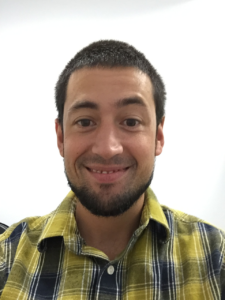 Sheldon Ebbeler |
Hyperluxian: A Language Based on Numbers & KnotsThis engelang comprises a detailed analysis of the possibility of a language based on numbers instead of sound. The wide-ranging implications of such a qualification—with respect to syntax, “phonology,” orthography, and naturalism—will all be discussed. Additionally, a potential artlang context will be proposed. |
| Arguably descendent from a sentient species in the Orion Nebula, Sheldon Ebbeler nonetheless currently subsists in Orlando, Florida. Holding degrees in physics and linguistics, Sheldon naturally works with young children with disabilities. A significant portion of this work involves teaching children to acquire language—albeit an unconstructed one. When he’s not out fervently violating subjacency restrictions, Sheldon’s many conlanging interests include constructed scripts, xenophonology, syntax, and engelanging.
|
|
 Jim Hopkins |
Shey Gadán Sonsayara! Ta Sit’sholós seti ta Aralbatan ta Drindaa vey ta Shinara‘Every Word is a Portal. Conlanging at the Crossroads of Art and Mystery’Every conlang has its genesis, its unique point of origin and it own path of development. Not all are born from science and structure, some take their beginnings from art and metaphysics, such is my experience with Itlani. This short review will explore that genesis and development, a very different way of conlanging. |
| James E. Hopkins received a BA in French from Hofstra University in 1974 and an MS in Metaphysics from the American Institute of Holistic Theology in 1998. He is a published poet and novelist. His first book of poetry Eden’s Day was published in 2008. His first novel, Circle of the Lantern, featuring many of his conlangs, was just recently released in February 2015. He has been involved in language construction since 1995 with the birth of his first conlang, Itlani (then known as Druni). Although Itlani is his first and foremost love, since that time he has been developing Semerian (Pomolito), Djiran (Ijira), Djanari (Nordsh) and Lastulani (Lastig Klendum), the other languages spoken on the planet Itlán. One further language project, Kreshem (Losi e Kreshem), is also under development. His primary interest in language construction is from an aesthetic and artistic perspective.
|
|
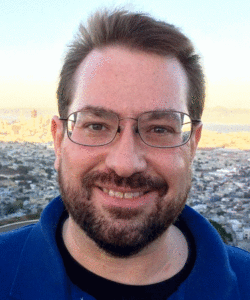 Grayson Richardson |
How Best to Slice a π — Categories, Taxonomies, Ontologies & Philosophical Conlangs: Carving up the semantic space into discrete concepts & words, with lexical resources you can use for language creationThis presentation is about categorization and the efforts from Aristotle to modern times to classify the knowledge of the world into hierarchical taxonomies and ontologies. Along the way, I will highlight some philosophical language schemes based on classification from the 17th century to the modern day. I will discuss how these have informed current projects in Natural Language Programming and theories of how words are stored in the brain. I will end with an overview of some exciting research, lexical databases and related resources you can use in your own conlanging endeavors. |
| Gray Richardson lives in Austin, Texas, where he works for the Texas Department of Insurance as a Medical Dispute Resolution Officer in the Division of Workers Compensation. In his spare time, he is chairman of Salvage Vanguard, a nonprofit theater company that commissions and performs exciting new, transformative works. (Including a recent play featuring Suzette Haden Elgin’s feminist conlang Láadan.) Grayson has been an avid conlanger since a young age, and has spent many years developing his primary conlang, “Celestial,” a philosophical language based on sound symbolism. He is active in the community as Admin. of the Conlangs, Con-scripts and Conworlding groups on Facebook. He joined the LCS after LCC5 (held in Austin), and was recently elected to the LCS Board of Directors.
|
|
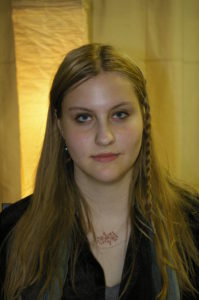 Margaret Ransdell-Green |
Sociolinguistic Elements of Constructed Languages in a Constructed World SettingThe constructed languages I have been building for over 17 years led to the creation of a world setting, Aeniith, to give a fictional speaker base to the languages (visit http://aeniith.com for more info). Along with the languages, I have created a sociolinguistic environment in which they can exist, along with systems rich with history, politics, sociology, etc. This presentation will explore some of the diverse social aspects to the cultures that have evolved around my conlangs, and how these cultures impact the languages themselves. |
| Margaret Ransdell-Green is a PhD student in linguistics with a focus in language documentation at the University of Hawai‘i at Mānoa. She holds a BA in linguistics from the University of Alaska Fairbanks where she also used to teach French as a lecturer. She has been creating constructed languages since around 1999. Her various languages are all placed in the fictional world setting of Aeniith (aeniith.com), which she enjoys expanding in cultural, historical, and political directions. In her spare time, she enjoys archery, reading, metalsmithing, music, hiking, and video games.
|
|
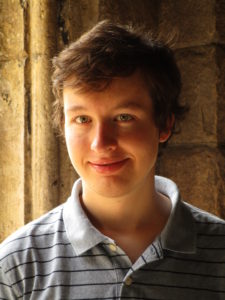 Kevin Keith |
Medieval Conlanging: What the Scholastics Can Teach Us About Constructing LanguagesOne idea I find very interesting is the idea of a grammatical tradition and its relation to language. The Paninian school is likely to be familiar to linguists and amateur conlangers alike. Lesser known, however, is the Modist school of grammar, which flourished during the European Middle Ages, and was centered around the work of the philosopher Thomas of Erfurt. The Modists developed a highly original account of language that in some ways prefigures the modern linguistic theory of universal grammar. For my talk, what I would like to explore is how what we might call ‘alternative’ formulations of grammar might inform language construction. Furthermore, I would like to argue the case for what might be termed ‘conlinguistics’ (so to speak). Simply put, I take conlinguistics to be the development of fictional grammatical traditions, pedagogic methods, linguistic theories, etc. designed with the intent to enrich conlangs and to increase the general verisimilitude thereof. Using the Modist school as an instructive example, my talk will trace the development of this body of thought out of its linguistic and philosophical context, while also working backwards from theory to language itself. |
| Kevin Keith is a software developer based out of New York City. Originally from Houston, Texas, Kevin has been constructing languages ever since the idea first occurred to him during a particularly long power outage when he was 14. His main conlang, Fyrthir, is a hybrid, with properties of both engineered and artistic languages, and is the product of over 8 years of development. In addition to linguistics, Kevin also has an active interest in scholastic philosophy, music theory, logic, and programming language theory, among many other things.
|
|
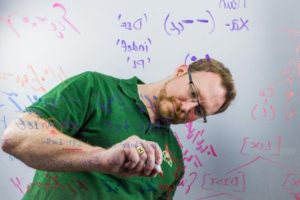 Joseph Windsor |
Theory selection and conlang generationConlangers have any number of reasons to invent a language and probably an equal number of strategies to go about doing so. In this talk, I present one approach that can aid the conlanger if their ultimate goal is a conlang that seems as if it could be a natural human language. Peterson (2015) advocates for utilizing the processes of historical linguistics and diachronic derivation to achieve a linguistically plausible human language. However, you may wonder where you start before historically deriving a new conlang; I suggest that the selection of linguistic theories may help you in that endeavor. As one example, I highlight the parts of the creation process from some of my personal conlangs created for use in Dungeons & Dragons games. I show how the phonological framework, The Contrastive Hierarchy (Dresher 2009) can be used to achieve a natural sounding phonology and even guide the implementation of phonological alternations that can enhance the naturalness of a new conlang. |
| Joseph Windsor is a PhD Candidate in linguistics at the University of Calgary. He uses his research in theoretical linguistics (primarily phonology and syntax) to inform aspects of his conlangs. In turn, he uses conlangs as teaching tools in the classroom whether it’s a bonus question on Klingon morphology for an introductory linguistics class or a phonology assignment on one of his personal conlangs to prevent the answer from being google-able. His passion in conlanging is naturalistic conlangs for use in Sci-Fi or Fantasy role playing games.
|
|
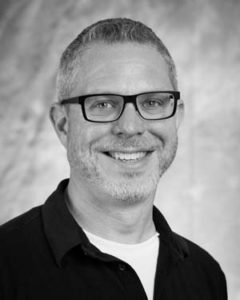 Matt Pearson |
Doing Without Adpositions in OkunaIn designing my conlang Okuna, one of the challenges I set for myself was to minimize the number of lexical categories in the language (cf. Sylvia Sotomayor’s Kēlen, which famously lacks a verb category). One decision I made, which other conlangers have adopted for their languages, was to express states by means of verbs rather than having a distinct category of adjectives. However, another less-common decision I made was to see if I could construct a workable grammar that completely lacked a category of adpositions (prepositions/postpositions). In this talk, I discuss how I implemented this decision, reviewing some of the grammatical strategies that Okuna uses to express spatio-temporal relations (as well as more abstract relations) without the need for adpositions. These strategies include case marking; relational nouns and verbs; co-verb constructions; and classes of motion verbs which encode the source, goal, or path of motion. I also present comparative data from natural languages which use these strategies. |
| Matt Pearson is a Professor of Linguistics at Reed College (Portland, Oregon), where he teaches courses in general linguistics, syntax, typology, morphology, semantics, and field methods. His research on word order, clause structure, and tense/aspect in Malagasy has appeared in Natural Language and Linguistic Theory, an edited volume from John Benjamins, and other publications. In 1996-97 Matt created the alien language for the NBC science fiction series Dark Skies.
|
|
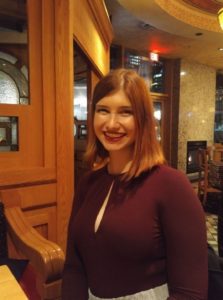 Lindsay Farrugia |
Sound Symbolism in Constructed LanguagesAs a scholar of the process of language construction, I am interested in sound symbolism and the role it plays in creating the sounds of a conlang. Phonosematicism is the idea that phonemes carry meaning, irrespective of their lexical value. My research primarily deals with the conlangs in J.R.R. Tolkien’s Middle Earth, and I use philological sources contemporary to Tolkien to describe the impact of phonosemantics and “phonetic fitness” in his languages. There are many phonetic trends across constructed languages that I will highlight in this presentation. While the emotional or expressive quality of language is relevant to any author, for conlangers the phonosemantic affective quality is given even more attention. I will discuss how this is one way that ethnocentrism is present in language construction, and particularly how Tolkien’s ideas of phonetic fitness are influenced by his subjective perception of beauty in sound and language. |
| Lindsay Farrugia is a graduate student in the Faculty of Creative and Critical Studies at UBC Okanagan. Her research examines the cultural impact of constructed languages, and how the process of language creation reveals particular linguistic biases, focusing on the languages of Tolkien’s Lord of the Rings trilogy.
|
|
